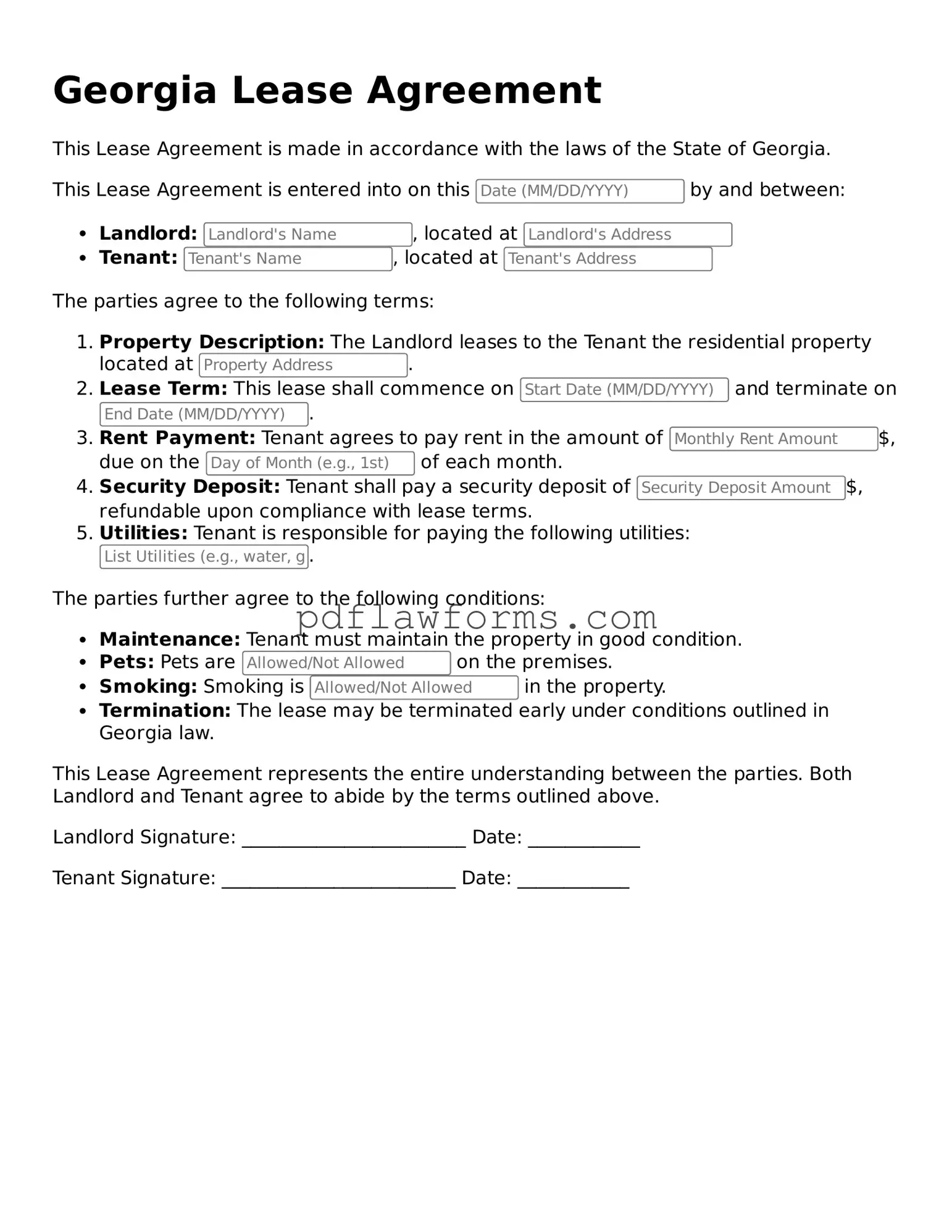Filling out the Georgia Lease Agreement form can be a straightforward process, but several common mistakes can lead to complications. One frequent error is not providing complete information. Landlords and tenants must ensure that all required fields are filled out accurately. Missing details can delay the lease signing and create confusion later.
Another common mistake is failing to read the entire lease before signing. Both parties should understand the terms and conditions outlined in the agreement. Skimming the document can result in misunderstandings regarding responsibilities, payment terms, and other important clauses.
People often overlook the importance of dates. It is crucial to specify the start and end dates of the lease clearly. Ambiguous or incorrect dates can lead to disputes about when the lease begins or ends, affecting both parties' planning.
Additionally, not including the security deposit amount is a mistake that can create issues. The lease should clearly state how much the deposit is, the conditions for its return, and any deductions that may apply. This transparency helps avoid conflicts at the end of the lease term.
Another error involves neglecting to document any agreed-upon repairs or maintenance responsibilities. If these details are not included in the lease, misunderstandings may arise later about who is responsible for specific tasks. Clear communication in the lease can prevent future disputes.
Sometimes, individuals fail to include the correct names of all parties involved. Each tenant and landlord should be accurately named in the lease. This ensures that everyone is legally bound by the terms of the agreement and can help avoid complications if issues arise.
Not specifying the rental amount and payment terms is another mistake. The lease should clearly outline the monthly rent, payment due dates, and acceptable payment methods. Clarity in this area can help both parties manage their finances effectively.
Finally, people may forget to include any additional terms or conditions that were verbally agreed upon. If there are special arrangements, such as pet policies or parking rules, these should be documented in the lease. Written agreements provide clarity and help protect the interests of both parties.
